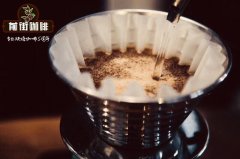Apart from Arabica, is there any coffee bean, iron pickup, coffee, a weak woman with a pleasant flavor?

Professional coffee knowledge exchange more coffee bean information please follow the coffee workshop (Wechat official account cafe_style)
Introduction to the varieties of Qianjie-tin card
Arabica, in fact, Arabica is one of the most important coffee tree species in the world. Among the coffee beans in the world, Arabica coffee accounts for about 65% and 80%. In a sense, many coffee beans are Arabica species. for example, Blue Mountain Iron pickup, Brazil Bourbon, Panamanian Rose Summer, while the so-called 100% Arabica can only represent beans.
It is one of the most important Arabica varieties of cultural and genetic significance in the world. High quality in Central America. Susceptible to coffee leaf rust but adaptable to cold conditions.
Tibica is the most famous variety of Tibica, which is characterized by high height, low yield and high flavor quality when it is easy to suffer from major diseases and insect pests. Like all Arabica varieties, Tibica originated in southwestern Ethiopia. Was brought to Yemen in the 15th or 16th century. In 1770, India began to grow coffee seeds from Yemen. In 1696 and 1699, coffee seeds were sent from the coast of Malabar, India, to the island of Batavia, today's Java. These seeds are what we call Tibica seeds. In 1706 a Tibica coffee tree was brought from Java to the botanical garden in Amsterdam and made its home. In 1714 the botanical garden gave France a tree.
Tibica was introduced to Guyana (present-day Suriname) by the Dutch in 1719. It spread from Guiana to northwest Brazil in 1927 and then to southern Brazil between 1760 and 1770. In 1723, coffee trees were transported from Paris to Martinique in the West Indies. In 1730, the British introduced Tibica coffee from Martinique to Jamaica. Arrived in Santo Domingo in 1735. In 1748, seeds were sent to Cuba from Santo Domingo.
Later, Costa Rica (1779) and El Salvador (1840) obtained seeds from Cuba. In the late 18th century, cultivation spread to the Caribbean (Cuba, Puerto Rico, Santo Domingo), Mexico and Colombia, and from there to Central America (planted in El Salvador as early as 1740). Until the 1940s, Tibica was grown on most coffee plantations in South and Central America. Because of its low production and high susceptibility to major coffee diseases, iron has been replaced in most of the Americas, but it is still widely cultivated in Peru, the Dominican Republic and Jamaica, where it is known as the Jamaican Blue Mountains.
Knowledge: most coffee grows in the equator between the Tropic of Cancer and the Tropic of Cancer. Coffee planting belt and origin will have a great influence on its flavor.
In short: Qianjie is a coffee research hall, happy to share the knowledge about coffee with you, we share unreservedly just to make more friends fall in love with coffee, and there will be three low-discount coffee activities every month. The reason is that Qianjie wants to make more friends drink the best coffee at the lowest price, which has been Qianjie's tenet for 6 years!
END
Important Notice :
前街咖啡 FrontStreet Coffee has moved to new addredd:
FrontStreet Coffee Address: 315,Donghua East Road,GuangZhou
Tel:020 38364473
- Prev

How are the coffee beans in Brazil, a coffee-producing country in South America, as mellow as chocolate nuts?
Professional coffee knowledge exchange more coffee bean information please follow the coffee workshop (Wechat official account cafe_style) front street-Brazil coffee producing area introduction Brazil topography is very obvious, the north has a vast Amazon plain, like a vibrant green leaf, the southern terrain is getting higher, the central hills gradually rise, the southeast edge has the famous Brazilian plateau, and the Brazilian coffee beans are produced
- Next

What kinds of coffee are there in Arabica? the origin of bourbon coffee began to break away from Yemen.
Professional coffee knowledge exchange more coffee bean information please follow the coffee workshop (Wechat official account cafe_style) front street-bourbon variety introduction coffee beans can be roughly divided into Arabica species and Robbins species and other varieties. Today's main introduction is Arabica species, the flavor of this coffee is much more exquisite than other kinds of coffee, at present, the world's boutique coffee is mainly Arabica.
Related
- Beginners will see the "Coffee pull flower" guide!
- What is the difference between ice blog purified milk and ordinary milk coffee?
- Why is the Philippines the largest producer of crops in Liberia?
- For coffee extraction, should the fine powder be retained?
- How does extracted espresso fill pressed powder? How much strength does it take to press the powder?
- How to make jasmine cold extract coffee? Is the jasmine + latte good?
- Will this little toy really make the coffee taste better? How does Lily Drip affect coffee extraction?
- Will the action of slapping the filter cup also affect coffee extraction?
- What's the difference between powder-to-water ratio and powder-to-liquid ratio?
- What is the Ethiopian local species? What does it have to do with Heirloom native species?

